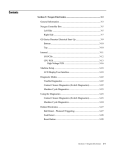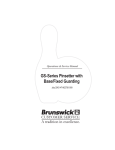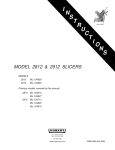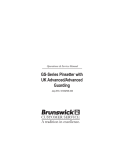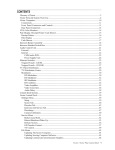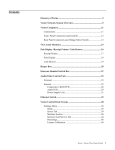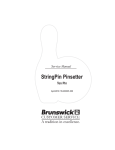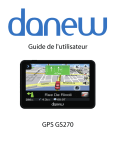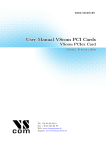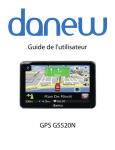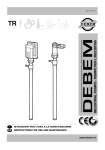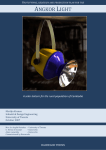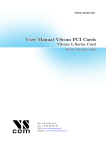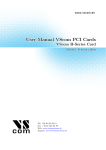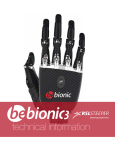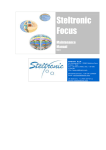Download - Brunswick
Transcript
Contents Section 7: Preventive Maintenance .................................................... 7-3 General Information ........................................................................... 7-3 1. Inspection (and correcting any problem found) ......................... 7-3 2. Cleaning .................................................................................. 7-4 3. Lubricating .............................................................................. 7-4 Oiling .................................................................................... 7-4 Greasing ................................................................................ 7-4 Proper Lubricants .................................................................. 7-4 Materials Required for Preventive Maintenance .................................. 7-5 Sub-Assembly Preventive Maintenance .............................................. 7-6 Elevator Assembly ....................................................................... 7-6 Transport Band Assembly ............................................................ 7-6 Ball Cushion and Pit Curtain ........................................................ 7-7 Ball Accelerator Assembly ........................................................... 7-7 Sweep Wagon Assembly ............................................................. 7-7 Setting Table Assembly ................................................................ 7-8 Drive Frame Assembly ................................................................ 7-9 Electrical ................................................................................... 7-10 Power Ball Lift .......................................................................... 7-10 Administration and Organization ................................................. 7-10 Main Frame Assembly ............................................................... 7-11 Distributor Assembly ................................................................. 7-11 Detailed Maintenance Schedule ....................................................... 7-14 Daily Maintenance ..................................................................... 7-14 Weekly Maintenance ................................................................. 7-14 Monthly Maintenance ................................................................ 7-15 Quarterly Maintenance .............................................................. 7-15 Semi-Annual Maintenance ......................................................... 7-16 Annual Maintenance .................................................................. 7-17 Section 7: Preventive Maintenance 7-1 Lubrication ...................................................................................... 7-18 Monthly .................................................................................... 7-18 Quarterly ................................................................................... 7-20 Semi-Annual ............................................................................. 7-34 Annual ...................................................................................... 7-37 Maintenance Forms ................................................................... 7-39 7-2 Section 7: Preventive Maintenance Section 7: Preventive Maintenance General Information Preventive maintenance is the most important responsibility of the pinsetter mechanic. Properly performed preventive maintenance will increase reliability, prevent major breakdowns and lengthen the life of the pinsetter. Preventative maintenance should begin when the pinsetters are installed. Waiting until the pinsetters are dirty and operating poorly will create a situation that can quickly become unmanageable. Finally, it is a very poor practice to rely on memory in servicing any machinery. An example of a typical work schedule is included that will allow you to track the maintenance as it is being done. The following pages of this section list step by step guidelines on what should be done and how often. Careful study of the contents of this section and proper use of the work schedule will result in clean, well operating machines and in addition, will greatly lengthen the useful life of your pinsetters. Tip: Combining the following activities during preventative maintenance can save time, and effort. In general preventative maintenance requires the following: 1. Inspection (and correcting any problem found) The pinsetter should be inspected periodically for the following condition: • Loose hardware • Damaged or worn parts • Cracked/fatigued metal or welds • Proper adjustments For optimum machine operation, a mechanic should correct any pinsetter problems such as loose hardware or adjustments immediately. If corrective action cannot be done immediately it should be logged on the “pending work item “ form for the machine. In addition all pinsetter malfunctions should be recorded on the pinsetter “Stop Sheet” that should be attached to the elevator of every machine. This form is invaluable in determining the reliability and performance of your pinsetters. Finally, if a problem is observed on a pinsetter, check the other pinsetters for the same problem. Section 7: Preventive Maintenance 7-3 2. Cleaning The frequency for cleaning the pinsetter depends on the type and quantity of lane conditioner (oil) used and the amount of bowling activity for the pinsetter. In general the pinsetter should be kept as clean as possible using a vacuum, general purpose cleaner, warm water (with detergent as needed), and invincible cleaner. 3. Lubricating Proper application of lubricants is essential for the operation and long life of the pinsetter. Oiling Always use a metered oil can. This will prevent over oiling where extra oil will drip off into the wrong area and cause problems, part failures or interfere with bowling activity. Greasing It is always a good practice to wipe off the old grease and dirt it has collected with it BEFORE applying a new coat of grease. Do not over grease the part as the grease can get into areas that can cause problems or interfere with the machine operation. Proper Lubricants Always use the proper lubricants such as those specified in the front of this manual. Penetrating oils do not last long and leave parts exposed to premature failure. Some lithium greases have a tendency to dry and harden quickly. This can lead to sticky parts or premature failure. 7-4 Section 7: Preventive Maintenance Materials Required for Preventive Maintenance - Metric tool set - Vacuum cleaner - tank style - Small paint brush - Cleaning cloths - Bucket and scrubbing brush (and/or a scrubbing mop) - Oil can with long rigid or flexible spout - Lubricating oil (light machine oil - 30 weight non-detergent) - such as: Brunswick Part No. 11-676353-000 (1 gallon container) - Lubricating grease - medium duty non-lithium - such as: Brunswick Part No. 12-700120-002 (3 each 3 1/2 oz. cartridges) Brunswick Part No. 11-676305-000 (1 each 14 oz. cartridge) Mobil “M-437-SL” - Hydraulic Fluid - such as: Brunswick Part No. 34-205052-000 (1 each 3 1/2 oz. can) Mobil “DTE II” - General purpose cleaner - a non-residue detergent type such as: Brunswick GPC Part No. 62-860085-005 (5 gallon container) - Brunswick Pinsetter Cleaner - Part No. 62-860083-005 (5 gallon container) - Chain Lubricant - such as: Lubriplate “Chain & Cable Fluid” (Part No. 634-205116-000) Section 7: Preventive Maintenance 7-5 Sub-Assembly Preventive Maintenance Elevator Assembly 1. Inspect condition of the frame and frame welds. Check for loose or missing hardware. 2. Inspect all shafts, bearings, sprockets, chains and pulleys for condition and adjustment. Check all pin shovels and shovel hardware. Inspect all shovel pivot levers. 3. Inspect condition and mounting of guards and verify guard identification labels are in place. 4. Inspect the mounting and adjustment of the elevator control, (EC) switch, as well as the mounting and function of Mechanic’s rear control box, and trouble light. Verify that all elevator cables are intact and routed correctly. 5. Inspect the mounting hardware, condition and adjustment of the shark assembly and pin guide wedges. Check the shovel cam for adjustment and condition. Check the alignment and mesh of the drive gears. Inspect the condition and operation of the shark fin. Inspect the tensioning and condition of the transfer belts. Inspect the mounting hardware and condition of the deflector shoe. 6. Inspect the condition, alignment, adjustment and operation of the pin count switch. 7. Check the smart shark solenoid and solenoid linkage. Check for proper operation of the smart shark. Check all mounting hardware and fasteners. Transport Band Assembly 7-6 Section 7: Preventive Maintenance 1. Inspect the condition of the welds and mounting hardware on the pit side frames. 2. Inspect the mounting hardware and condition of the transport band boards. Check the condition and tracking of the transport band carpet. Inspect the front and rear rollers for bearing and shaft condition, correct tensioning and alignment in mounting slots. Inspect the condition and operation of the centering guide rollers. 3. Inspect the condition and tensioning of the transport band drive belts. Inspect the mounting hardware on the idler and tensioner assemblies. Check the condition of the idler pulleys. 4. Inspect the condition and mounting hardware on the pin feed deflectors and mounting brackets. Check the adjustment on the pin feed deflectors. Ball Cushion and Pit Curtain 1. Inspect the condition and mounting hardware on the ball cushion board and the impact strips. Check the attachment of the rubber cushion to the board and the facing to the rubber cushion. Inspect the cushion frame welds, and check the mounting hardware. Inspect the nylon cushion bearings for wear and check the location and hardware on the stop collars. Inspect the cushion assembly for proper adjustment. 2. Inspect the mounting, and adjustment of ball cushion shock absorber. Inspect the mounting and location of the shock absorber adjustment plate. 3. Inspect the condition and mounting of the overflow chutes. Inspect the condition and adjustment of the overflow socks. 4. Inspect the condition of the pit curtain and check the mounting hardware. Ball Accelerator Assembly 1. Inspect the condition of the frame welds. Check that foot guards are in place. Inspect the condition and location of the ladder. 2. Inspect the condition and mounting hardware on the ball door protector plate. 3. Inspect the accelerator motor. Check for excessive vibration. 4. Inspect the condition of the flat belt. 5. Inspect the ball door and ball door locking mechanism for proper adjustment. Check the condition of the ball door, ball door button and door locking bolt. Inspect the ball door solenoid for correct operation. Check the routing of the solenoid cable. Verify that ball door shafts rotate freely. Sweep Wagon Assembly 1. Inspect the condition of the sweep wagon frame and frame welds. Check the roller mounting and adjustment. Check the conditions of the pusher rods and pusher rod bushings. Inspect the conditions of the protector blocks and block mounting hardware. Check all sweep wagon hardware. Section 7: Preventive Maintenance 7-7 2. Inspect the condition of the sweep board and adapters. Check the adjustment of the sweep board and adapters. 3. Inspect the condition of all sweep release mechanism components. Check all sweep release mounting hardware. Inspect for missing springs or worn linkage and pivot bushings. Check the condition of the chain and pivot bearing. Check the operation of the solenoid. Inspect the solenoid cable routing. 4. Inspect the sweep attenuator and sweep shock absorber for loose or missing hardware. Check the attentuator and “G” switch for proper adjustment. Inspect all pivot points for wear. Inspect the “G” switch cable routing. Setting Table Assembly 7-8 Section 7: Preventive Maintenance 1. Inspect the setting table frame for wear or broken welds. Check for loose or missing hardware. Check the vertical swing shaft stop bolt for proper adjustment. Inspect the condition of the vertical helper springs. 2. Check for loose or missing spotting tong and geared rack hardware. Inspect the “ST” switch mounting and check the adjustment. Inspect the condition of the tongs, gears and toothed racks. Check the operation of the tongs and inspect the tong dampers for wear. 3. Inspect all cable channels and conduits for wear. Check that all channels and conduits are secured to the frame. Inspect the condition of the table harness plug and its mounting bracket. 4. Check the adjustment on the stop collars. Inspect the swing shaft bearings for wear. Inspect the condition of the table spring. Inspect the condition and mounting of the table jam roller. Check the adjustment of the horizontal stop bolt. 5. Inspect the TS-1 jam switch mounting and adjustment. Check for loose or missing hardware and springs. 6. Inspect all pin holders and pin holder solenoids for correct mounting. Inspect all pin holder switches for tight mounting. Check all pin holder connectors and wiring for routing and connection. Inspect the adjustment on the pin detector plates. 7. Inspect the mounting of the table racks to the table. Check the adjustment and condition of the small roller support assembly. Check the condition of the T-stop. Check the mounting of the OOR actuator cam. Inspect the condition of the chain and pivot bearing. Drive Frame Assembly 1. Inspect the welds and condition of the sweep shaft. Check the sweep shaft supports for secure mounting. Inspect the sweep shaft bearings for signs of wear. Inspect the connecting rods and verify all hardware is in place and secure. 2. Inspect the condition and welds on the left-hand and right-hand drive frame assemblies. Check for loose or missing hardware. Inspect all cable channels and cables for condition and routing. Check for any worn shaft bearings. Check the chain tensioners for condition and adjustment. Inspect the frame counter for correct operation. 3. Inspect the spotting tong drive for loose or missing hardware. Check for loose or worn gears. Check the spotting tong solenoid for proper operation. Check the spotting tong clutch for correct operation, and check the condition of the clutch shaft. Inspect the mesh between the square shaft drive gear and the spur gear. Check the condition of the square shaft drive gear. 4. Inspect the motors for correct mounting and alignment. Check the condition of all V-belts. Inspect the motor cables for correct routing. Check the condition of the motor tensioning springs. Check all motor mounting plate bushings. Check for excessive vibration in motor and belt operation. 5. Inspect the stroke limiter for a bent or cracked plate and loose or missing hardware. Check the mounting of the stroke limiter shock absorber. Check the condition of the rubber bumper. Check the solenoid for proper operation. Inspect the square shaft, the linkage and the square shaft latch for correct adjustment. 6. Inspect the condition of the double V-belts. Check for loose or missing tensioner mounting hardware. Check the tensioner shaft and bearings for loose or noisy operation. 7. Inspect the condition of the setting table and sweep motor drive assemblies. Check for worn or damaged chains. Check for loose or missing bearing plate hardware. Inspect the condition of bearing plate bearings and drive sprocket shafts. 8. Inspect the condition of the guide tower assembly. Check the mounting and adjustment on the TS-2 and OOR switch. Check for correct switch cable mounting. Check for loose or missing guide tower hardware. Inspect the condition of the lift chain sprocket. Check the condition of the jam lever and spring. Section 7: Preventive Maintenance 7-9 9. Inspect the sweep and table drive shaft assemblies. Check for shaft wear. Check for chain wear and proper tensioning. Inspect the crank arms and verify they are secure on the shafts. Check the sprockets for wear. 10. Inspect the switch cluster. Check the switch cluster housing to make sure it is secure. Check the adjustment on the “A,” “B,” “C,” and “D” switches. Check the adjustment on the switch cam. Electrical 1. Inspect the electrical box and box mounting hardware. Check the ground strap and verify that it is in place and secure. Verify that all cables are routed correctly. Inspect the box cover to verify it is in place and secure. Are all box switch guards in place? Check all cable and box connectors for correct seating. 2. Inspect the ball detect and reflector. Check and verify all mounting hardware is secure. Check the ball detector assembly for proper adjustment. 3. Inspect the ball rack reset button. Check for correct operation and check the cable routing and connection. Power Ball Lift 1. Check the condition and mounting of the ball lift tires. Check the condition of the lift tire shafts and bearings. Check the condition and operation of the ball lift clutch. 2. Check the ball lift motor for correct mounting. Check the motor pulley for proper alignment. Check the drive belt condition and alignment. 3. Check the ball lift tracks for correct mounting. Check the condition of the rubber and leather tracks and verify they are secure. Administration and Organization 7-10 Section 7: Preventive Maintenance 1. Is a spare parts and inventory control system in place? Are adequate spare parts on hand and are those parts organized and accessible? Check for inventory control. 2. Verify that the correct hand tools are in place. Are the hand tools organized for ready access? 3. Verify that the correct cleaning and lubrication supplies are on hand. Check and verify the supplies are adequate and that the correct approved materials are in use. 4. Is a preventive maintenance program in use? Is a lubrication program in use? Is a cleaning program in use? 5. Verify that current operations manuals, service parts manuals and service bulletins are in the center. 6. Verify that stop sheets, recap forms and frames per stop data is being used in the center. Main Frame Assembly 1. Inspect the main frame. Check for wear points or broken welds. Check for loose or missing hardware. Check the main support braces and verify they are secure. 2. Inspect the pinlight fixture. Check and verify that the fixture is secure. Check the lamp and lamp sockets. Check the power cord routing. 3. Inspect the guards. Check for wear points. Check for loose or missing hardware. Check for any missing guards. Check the work platform and the work platform braces and hardware. Distributor Assembly 1. Inspect the distributor frame assembly. Check for worn or damaged frame components and welds. Check for loose or missing hardware. Check and verify that the dust pan is secure. Check the distributor rails and extensions for wear or cracks. Check the distributor stations for wear or cracks. Inspect the lower pin guides for bent or missing parts. Check the corner turn rails and corner pin turn devices for loose or missing hardware and for correct adjustment. 2. Inspect the distributor shafts, pulleys and belting. Check for worn or damaged shafts or bearings. Check for worn or cracked pulleys. Inspect the condition of the distributor belting. Check the condition of distributor gears and verify proper gear mesh. Check the alignment of all shafts, pulleys and belting. Check for any missing shaft, bearing or pulley hardware. Section 7: Preventive Maintenance 7-11 3. 7-12 Section 7: Preventive Maintenance Inspect the distributor pin stations. Verify all pin stops are in place. Check the pin sliders for free operation. Check the pin sliders for cracks or breaks. Check for loose or missing pin station hardware. Check the ejector flaps for wear or cracking. Check the retaining bows for wear or cracking. Check for worn, cracked or misadjusted pin release levers. Verify that all pin station springs are in place. Inspect the top and bottom housings for cracks or wear. GS-Series Pinsetter Preventive Maintenance Inspection Center Name Lane # Mechanic Name Date Inspection Period 1 2 3 4 Inspection Period TRANSPORT BAND ASSEMBLY SWEEP WAGON ASSEMBLY 1. Hardware / Side Frames / Boards 1. Sweep Wagon Frame / Guide Rollers 2. T-Band Board / Carpet / Rollers 2. Sweep Board / Adapters / Board Felt 3. T-Band Drive Belts / Pulleys 4. T-Band Track Tension 1 2 3 4 3. Sweep Release / Attenuator / Hydraulic 4. Sweep Position / Switch SM + G BALL CUSHION / PIT CURTAIN DRIVE FRAME ASSEMBLY 1. Cushion Board / Frame / Hardware 1. Distribution Drive Assembly 2. Shock Absorbers / Rubber Bumper 2. Sweep Drive Assembly 3. Overflow / Chutes / Socks 3. Table Drive Assembly 4. Pit Curtain 4. Motors / Belts / Motor Mountings BALL ACCELERATOR ASSEMBLY 5. Stroke Limiter Assembly / Hydraulic 1. Frame / Welded Assemblies / Hardware 6. Out Of Range Function (OOR Switch) 2. Door Protector Wedges ELECTRICAL COMPONENTS 3. Motor / Flat Belt / Drum 1. Boxes / Mounting Hardware ELEVATOR ASSEMBLY 2. Ball Detector / Reflectors 1. Frame/Welded Assemblies 3. Ball Rack Reset Button 2. Chains / Shovels POWER BALL LIFT 3. Feed / Centering Deflectors 1. Ball Lift Tires 4. Damper Plate / Rubber Bumpers 2. Motor / Drive Belt 5. Elevator (EC) Switch 3. Ball Lift Tracks 6. Shark / Pin Guide Wedges ADMINISTRATION AND ORGANIZATION 7. Pin Count Switch (SSW) 1. Spare Parts / Inventory Control 8. Round Belt / V-Belt 2. Tools / Maintenance Equipment DISTRIBUTOR FRAME 3. Cleaning / Lubrication Supplies 1. Frame / Welded Assemblies 4. Preventive Maintenance Program 2. Shafts / Pulleys / Belting 5. Manuals and Service Bulletins 3. Pin Separators / Centering Devices 6. Stop Sheets / Recap Forms SETTING TABLE ASSEMBLY MAIN FRAME ASSEMBLY 1. Frame / Welded Assemblies 1. Frame / Welded Assemblies 2. Spotting Tongs / Geared Racks / Switch ST 2. Pin light Fixture 3. Table Harness / Cable Channels 3. Guards / Work Platform 4. Swing Shafts / Connecting Rods 5. Table Jam Switches TS-1 / TS-2 6. Pin Holders / Pin Switches / Detect Plates 7. Setting Table Guide Bearings / Rollers 8. Table Positions / Top / Detect / Down 9. Table Gear / Lift and Drive Trains 10. Parallel Drive 11. Spotting Tong Cam Cluster Section 7: Preventive Maintenance 7-13 Detailed Maintenance Schedule The following detailed instructions explain each item on the work schedule. These items are discussed in the identical order in which they appear on the maintenance schedule. Daily Maintenance 1. Check Stop Sheets for Each Pinsetter and Make necessary corrections 2. Troubleshoot, Repair or Adjust all Reported Failures 3. Completely Clean One Pinsetter Developing a procedure in which you remove the dirt and loose particles from a machine has two benefits. First it keeps the pinsetter free of dirt and second, it also causes the person doing the cleaning to look over the entire machine. This allows this person to notice loose or worn parts, welds that are cracking or any other problem that can be fixed before it causes a machine down situation. 4. Clean Pins For One Lane Pair Cleaning the pins with pin cleaner regularly will extend the useful life of the pins. Weekly Maintenance 5. Clean Shark Switch Pin Guide Assemblies The shark switch pin guide wedges must be cleaned with a general purpose cleaner. To prevent lane oil and dirt from causing pin jams. 6. Pin Wipes and Overflow Chutes Wash in warm water or diluted Invincible cleaner. 7. Check the Position of Each Transport Band; Adjust as Needed Make sure the bands are centered on the rollers. 8. Clean the Entire Transport Band with a General Purpose Cleaner 9. Check for Worn “V” Belts That Are Cracked, Split or Causing Motors to Bounce Wipe the belts with a dry cloth while inspecting them. Especially note the condition of the table motor drive belt. Failure of this belt will cause a sudden dropping of the table which can result in severe machine damage and possible personal injury. 10. 7-14 Section 7: Preventive Maintenance Check All Green Belts for Proper Tension Check for squealing, slipping or sagging belts. Replace or resize as necessary. 11. Check All Hydraulic Shock Absorbers for Leakage; Verify Proper Operation Check fluid levels of shocks if applicable 12. Check the Ball Door Shaft Collar Verify that the collar is tight and holding the ball door in the correct position. 13. Check the Overflow Socks for Wear and Proper Alignment Monthly Maintenance 14. Clean the Front of the Ball Cushion Pit Curtain, and Pinfeed Deflectors with a General Purpose Cleaner 15. Check and Tighten All Fastening Screws on the Transport Band Boards 17. Examine the Setting Table Cable Conduits for Damage 18. Check the Ball Door Locking Mechanism for Proper Operation 19. Check the Pin Feed Deflectors for Proper Clearance Above the Transport Band 20. Lubricate All Items Listed in the Monthly Section of the Lubrication Schedule 21. Clean Distributor Belts with General Purpose Cleaner 22. Vacuum the Distributor’s Dust Pan 23. Clean the Overflow Socks with Basic laundry Detergent 24. Adjust the Pin Count Switch and Shark Assembly Quarterly Maintenance 25. Clean the Ball Detect Lens and Reflectors Clean only with a glass cleaner that will not harm plastics. 26. Check the Drive Gears, Pinions and Pulleys for the Sweep and Table for Wear 27. Clean the Sweep Tracks and Check Sweep Wagon Guide Rollers for Proper Operation Section 7: Preventive Maintenance 7-15 28. Check Table Rack Guide Rollers for Proper Tightness and Operation 29. Examine the Accelerator Rails for Signs of Wear 33. Check the Overflow Chutes for Signs of Wear or Loose Hardware 30. Check the Adjustment and Hardware Connections for All tion Switches 31. Check and Tighten All Pin Holder Mounting Hardware 32. Check and Adjust the Tension of the Table and Elevator Motor Drive Chains 33. Check the Distributor’s Bearings, Shafts and Drive Pulleys for Signs of Wear 34. Tighten the Mounting Bolt and Check the Key and Pivot Bearing for the Table Shaft’s Crank Arm Lubricate the Pivot Bearing 35. Check Angles “1” and “2” of the Table Shaft’s Crank Arm and Chain 36. Check and Lubricate the Sweep Release Chain Clevis for Wear 37. Check All Distributor Hardware for Tightness 38. Lubricate All Items Listed in the Quarterly Section of the Lubrication Schedule Func- Semi-Annual Maintenance 7-16 39. Check the Ball Impact Protection Strips on the Ball Cushion Board 40. Inspect the Ball Cushion Frame, Stop Collars and Bearings 41. Check and Tighten All Hardware on the Kickback and Accelerator Protector Plates 42. Inspect and Clean the Accelerator Belt, with General Purpose Cleaner. 43. Check the Sweep Release Mechanism for Wear, Cracks and Proper Operation Section 7: Preventive Maintenance 44. Check and Tighten the Fastening Hardware on the Sweep Shaft Bearing Retainers Failure to tighten can cause the sweep shaft to shift and the arms to hit the table. 45. Check and Tighten the Sweep Arm Connecting Rods 46. Check and Adjust the Clearance Between the Sweep Track and Guide Rollers 47. Check the Stroke Limiter Assembly for Proper Operation and Adjustment 48. Check the Pin Holder Swing Shaft Bushings 49. Check the Spotting Tong Toothed Racks and Gears 50. Check All Drive Frame Hardware for Tightness 51. Check All Elevator Hardware for Tightness 52. Lubricate All Items Listed in the Semi-Annual section of the Lubrication Schedule Annual Maintenance 62. Tighten All Pit Curtain Support Bracket Bolts and Curtain Mounting Bolts 64. Check the Electronic Box Mounting Hardware 65. Check All Cabling for Signs of Stress and Wear 66. Check All Welded Assemblies for Signs of Breakage 67. Check All Pivot and Wear Points 68. Lubricate All Items Listed in the Annual Section of the Lubrication Schedule 69. Review the Safety Guidelines Listed in this Manual with All Personnel Working on or Around the GS-Series Pinsetters Section 7: Preventive Maintenance 7-17 Lubrication Monthly 1. Pin Shovel Shafts, and Rollers A. One drop of oil on each pivot point. A A 2. 7-18 Section 7: Preventive Maintenance Ball Door A. Shaft - one drop of oil on the shaft collar. B. Latch - cover with a light film of grease. C. Arms - cover with a light film of oil. 3. Pin Holder Swing Shafts A. Swing Shaft - one drop of oil on the bushing at end of each of the four swing shafts. 4. Check the Fluid Levels of the Hydraulic Shock Absorbers where applicable A A. Levels of all three shock absorbers must be filled to the rim as indicated in Figure 9-1. The shaft should be out in the relaxed position when checking the fill level. A Section 7: Preventive Maintenance 7-19 Quarterly 1. Drive Chains A. Table Shaft - a light coating of chain lubricant. B. Sweep Shaft - a light coating of chain lubricant. 2. Sweep Release Chain A. A light coating of chain lubricant. 3. A 7-20 Section 7: Preventive Maintenance Elevator Chains A. Put a light coating of chain lubricant on both chains. 4. Setting Table Pinion Gears A. Put a light film of grease on the pinion gear. A B. Put a light film of grease on the table rack. B Section 7: Preventive Maintenance 7-21 5. Distributor Spur Gears A. Grease both sets with a light film. A 6. Spotting Tong Clutch Gear Cluster A. Grease the gears lightly. NOTE: Do not allow grease to get into the clutch mechanism. A 7-22 Section 7: Preventive Maintenance 7. Gear Cluster Pivot Lever Plate A. Apply one drop of oil to each pivot point. 8. Spotting Tong Square Shaft and Bevel Gears A. Apply a light film of grease on the entire travel area of the square shaft. B. Apply a light film of grease on both bevel gears. A A A B Section 7: Preventive Maintenance 7-23 9. A 10. B A A 7-24 Section 7: Preventive Maintenance Ball Cushion Bushings A. Grease both sides as required. Hydraulic Shock Absorber Bushing A. One drop of oil each side of the bushing. B. One drop of oil on spacer, if applicable. 11. A Spotting Tong Drive Gears A. Apply a light film of grease on all four gears NOTE: There is a small gear located under the largest gear. NOTE: You should always remove the old grease and dirt before applying new grease. 12. Front Distributor Shaft and Idler Gears A. Apply a light film of grease on both gears. A Section 7: Preventive Maintenance 7-25 13. Ball Door Button Shaft A. One drop of oil on each side of the shaft. A A 14. A A A B 7-26 Section 7: Preventive Maintenance Ball Door Locking Mechanism A. Connecting links need 1 drop at each pivot point. B. Bottom of locking bolt needs a light film of grease. 15. Sweep Release Pivot Link A. One drop of oil to both ends of the link. A A A 16. Sweep Release Mechanism A. One drop of oil on each pivot point. A A A Section 7: Preventive Maintenance 7-27 17. A A Sweep Attenuator A. Apply one drop of oil to each pivot point. . A 18. A A 7-28 Section 7: Preventive Maintenance Sweep Wagon Roller Shafts A. Apply one drop of oil to each of the six shafts. 19. A Sweep Wagon Link Bearings A. Apply one drop of oil to each pivot point. A A A Section 7: Preventive Maintenance 7-29 20. A Stroke Limiter Shock Absorber A. Apply one drop of oil to each stop collar on the lower mounting shaft. B. Apply one drop of oil to each bushing on the stroke limiter block. B C. 7-30 Section 7: Preventive Maintenance Apply one drop of oil to each of the four stroke limiter plate’s bushings A A 21. Sweep Drive’s Bushings A. Apply one drop of oil to each bushing. Section 7: Preventive Maintenance 7-31 22. 23. 7-32 Section 7: Preventive Maintenance Sweep Release Chain Clevis A. Apply one drop of oil to the clevis’s pivot point. Table Lift Chain Clevice A. Lower the setting table onto a jackstand or other suitable support to release tension on the chain. Remove the clevice from the table shaft crank arm and grease the crank arm’s shaft. Reinstall the clevice. 24. Shark Switch Gears A. Apply a light film of grease to both gears. B. One drop of oil on the Shark Fin slide and pivot. A A Section 7: Preventive Maintenance 7-33 Semi-Annual 1. Motor Mounting Brackets Shafts A. Apply two drops of oil to each bushing on the shafts. A A A 2. Pin Station Assembly A. B. A B AA B A 7-34 Section 7: Preventive Maintenance Apply one drop of oil to pivot point. Apply a light film of grease to the bevel gears. 3. Transport Band Frame Rollers A. Remove the rollers from their shafts and grease the entire shaft. A 4. B D Pin Holders A. Apply one drop of oil to each end of the pin detector plate’s pivot. B. Apply one drop of oil to the switch finger. C. Apply light film of grease on both gripper drive teeth. D. Apply one drop of oil to pin gripper pivot point. NOTE: Never apply any type of lubricant to the solenoid or its plunger. When a plunger becomes dirty or sticky, it must be cleaned with electrical contact cleaner and them dried to leave no residue. D C Section 7: Preventive Maintenance 7-35 5. B 3 mm A 7-36 Section 7: Preventive Maintenance Setting Table Swing Shaft Roller A. Apply one drop of oil to the shaft on each side of the roller. B. Apply a light film of grease along the actuator arm. Annual 1. Distributor Shaft Bearings A. Apply one drop of oil to the shaft to allow the bearing to be removed when needed. 2. Transport Band Rollers A. Apply one drop of oil to each bearing on the front and rear rollers to allow for easier bearing removal when needed. A A A A A Section 7: Preventive Maintenance 7-37 7-38 Section 7: Preventive Maintenance 3. Drive Train Shaft Bearings A. Grease with Vita Needle. 4. Distributor Drive V-Belt Tensioner Bearings A. Remove and grease bearings with a Vita needle. Maintenance Forms The following pages contain forms to be used in conjunction with maintenance on the Brunswick GS-Series Pinsetters. Section 7: Preventive Maintenance 7-39 GS-Series Stop Sheet Date 7-40 Frame Count Error Code Section 7: Preventive Maintenance Machine No. _______________ Corrective Action Mech. Initials Error Codes Std. Extended Code Code Std. Extended Code Code P0 Pin OOR Out-of-Range 62 C Found Switch C is Not Expected But Found 01 Pin1 Ld Pin Loading Time Out Pin 1 63 D Found Switch D is Not Expected But Found 02 Pin2 Ld Pin Loading Time Out Pin 2 64 SMFound Switch SM is Not Expected But Found 03 Pin3 Ld Pin Loading Time Out Pin 3 65 G Found Switch G is Not Expected But Found 04 Pin4 Ld Pin Loading Time Out Pin 4 66 STFound Switch ST Is Not Expected But Found 05 Pin5 Ld Pin Loading Time Out Pin 5 67 OORFound SW. OOR is Not Expected But Found 06 Pin6 Ld Pin Loading Time Out Pin 6 70 A Ntfnd Switch A Expected But Not Found 07 Pin7 Ld Pin Loading Time Out Pin 7 71 B Ntfnd Switch B Expected But Not Found 08 Pin8 Ld Pin Loading Time Out Pin 8 72 C Ntfnd Switch C Expected But Not Found 09 Pin9 Ld Pin Loading Time Out Pin 9 73 D Ntfnd Switch D Expected But Not Found 10 Pin10 Ld Pin Loading Time Out Pin 10 74 SM Ntfnd Switch SM Expected But Not Found 50 Detect10 #10 Pin Not Detected in Diagnostics 75 G Ntfnd Switch G Expected But Not Found Detect1 #1 Pin Not Detected in Diagnostics 76 STNtfnd Switch ST Expected But Not Found 52 Detect2 #2 Pin Not Detected in Diagnostics 90 Invld 0 Invalid Machine State 0 53 Detect3 #3 Pin Not Detected in Diagnostics 91 Invld 1 Invalid Machine State 1 54 Detect4 #4 Pin Not Detected in Diagnostics 92 Invld 2 Invalid Machine State 2 55 Detect5 #5 Pin Not Detected in Diagnostics 93 Invld 3 Invalid Machine State 3 56 Detect6 #6 Pin Not Detected In Diagnostics 94 Invld 4 Invalid Machine State 4 Invld 5 Invalid Machine State 5 51 57 Detect7 #7 Pin Not Detected in Diagnostics 95 58 Detect8 #8 Pin Not Detected in Diagnostics EJ ElevJam Elevator Jam 59 Detect9 #9 Pin Not Detected in Diagnostics EL Pin Cnt Pin Count Switch Shorted for 5 Seconds 60 A Found Switch A is Not Expected But Found J1 TS1 Jam Jam Switch TS1 61 B Found Switch B is Not Expected But Found J2 TS2 Jam Jam Switch TS2 (Tower) BA Accelerator Motor (overload) Section 7: Preventive Maintenance 7-41 GS-Series Pinsetter Weekly Report C enter Name ______________________________________________________________ Week Endi ng ______________________________ D ai ly Frame Totals D ai ly Stop Totals Error C ode 01 02 D escri pti on Monday Tuesday Wednesday Thursday Fri day Saturday Sunday Pi n 1 - Ti me Out or Jam Pi n 2 - Ti me Out or Jam Pi n 3 - Ti me Out or Jam 04 Pi n 4 - Ti me Out or Jam 05 Pi n 5 - Ti me Out or Jam 06 Pi n 6 - Ti me Out or Jam 07 Pi n 7 - Ti me Out or Jam 08 Pi n 8 - Ti me Out or Jam 09 Pi n 9 - Ti me Out or Jam 10 *11 Pi n 10 - Ti me Out or Jam Pi n Jam - Left-Hand C orner *12 Pi n Jam - Ri ght-Hand C orner *13 Pi n Jam - Left D i stri butor Lane 1 *14 Pi n Jam - Left C enter D i stri butor Lane 2 *15 Pi n Jam - Ri ght C enter D i stri butor Lane 3 *16 Pi n Jam - Ri ght D i stri butor Lane 4 *17 Pi n Jam - Shark Swi tch *18 Pi n Jam - Pi n Gui de Wedges *19 Pi n Jam - Pi n Head Fi rst *20 Pi n Stuck i n Elevator *21 Pi n Under Pi n Feed D eflector *22 Pi n i n Ball Accelerator *23 Ball Stuck i n Pi t *24 Ball Stuck i n Ball Li ft *25 Pi n Blocki ng Ball D oor *26 Pi n Jammed i n Setti ng Table *27 Spotti ng Tongs Jammed *28 Sweep Roller Not i n Slot *29 Belt Broken *30 Belt Loose *31 Overflow C hute / Sock Jam #7 Pi n Si de *32 Overflow C hute / Sock Jam #10 Pi n Si de *50 Pi n Holder Swi tch Malfuncti on 60 Swi tch A Not Expected but Found 61 Swi tch B Not Expected but Found 62 Swi tch C Not Expected but Found 63 Swi tch D Not Expected but Found 64 Swi tch SM Not Expected but Found 65 Swi tch G Not Expected but Found 66 Swi tch ST Not Expected but Found 67 Swi tch OOR Not Expected but Found 70 Swi tch A Expected but Not Found 71 Swi tch B Expected but Not Found 72 Swi tch C Expected but Not Found 73 Swi tch D Expected but Not Found 74 Swi tch SM Expected but Not Found 75 Swi tch G Expected but Not Found 76 Swi tch ST Expected but Not Found 90 Invali d Machi ne State 0 91 Invali d Machi ne State 1 92 Invali d Machi ne State 2 93 Invali d Machi ne State 3 94 Invali d Machi ne State 4 95 Invali d Machi ne State 5 98 Electroni c Box Fai lure 99 Part Broken / Other (Explai n on Back) EJ Elevator Jam EL Pi n C ount Swi tch Fai lure J1 Jam Swi tch TSI J2 Jam Swi tch TS2 (Tower) PO Out-of-Range *These code numbers are not displayed by the Pinsetter CPU LED display. Explain problems or irregularities on the back of this report. 7-42 Section 7: Preventive Maintenance Total GS-Series Pinsetter Monthly Report C enter Name __________________________________________________________ Month________________ D ate___________________ D ai ly Frame Totals D ai ly Stop Totals Error C ode 01 D escri pti on 02 Pi n 2 - Ti me Out or Jam 03 Pi n 3 - Ti me Out or Jam 04 Pi n 4 - Ti me Out or Jam 05 Pi n 5 - Ti me Out or Jam 06 Pi n 6 - Ti me Out or Jam 07 Pi n 7 - Ti me Out or Jam 08 Pi n 8 - Ti me Out or Jam 09 Pi n 9 - Ti me Out or Jam 10 *11 Week 1 Week 2 Week 3 Week 4 Pi n 1 - Ti me Out or Jam Pi n 10 - Ti me Out or Jam Pi n Jam - Left-Hand C orner *12 Pi n Jam - Ri ght-Hand C orner *13 Pi n Jam - Left D i stri butor Lane 1 *14 Pi n Jam - Left C enter D i stri butor Lane 2 *15 Pi n Jam - Ri ght C enter D i stri butor Lane 3 *16 Pi n Jam - Ri ght D i stri butor Lane 4 *17 Pi n Jam - Shark Swi tch *18 Pi n Jam - Pi n Gui de Wedges *19 Pi n Jam - Pi n Head Fi rst *20 Pi n Stuck i n Elevator *21 Pi n Under Pi n Feed D eflector *22 Pi n i n Ball Accelerator *23 Ball Stuck i n Pi t *24 Ball Stuck i n Ball Li ft *25 Pi n Blocki ng Ball D oor *26 Pi n Jammed i n Setti ng Table *27 Spotti ng Tongs Jammed *28 Sweep Roller Not i n Slot *29 Belt Broken *30 Belt Loose *31 Overflow C hute / Sock Jam #7 Pi n Si de *32 Overflow C hute / Sock Jam #10 Pi n Si de *50 Pi n Holder Swi tch Malfuncti on 60 Swi tch A Not Expected but Found 61 Swi tch B Not Expected but Found 62 Swi tch C Not Expected but Found 63 Swi tch D Not Expected but Found 64 Swi tch SM Not Expected but Found 65 Swi tch G Not Expected but Found 66 Swi tch ST Not Expected but Found 67 Swi tch OOR Not Expected but Found 70 Swi tch A Expected but Not Found 71 Swi tch B Expected but Not Found 72 Swi tch C Expected but Not Found 73 Swi tch D Expected but Not Found 74 Swi tch SM Expected but Not Found 75 Swi tch G Expected but Not Found 76 Swi tch ST Expected but Not Found 90 Invali d Machi ne State 0 91 Invali d Machi ne State 1 92 Invali d Machi ne State 2 93 Invali d Machi ne State 3 94 Invali d Machi ne State 4 95 Invali d Machi ne State 5 98 Electroni c Box Fai lure 99 Part Broken / Other (Explai n on Back) EJ Elevator Jam EL Pi n C ount Swi tch Fai lure J1 Jam Swi tch TS1 J2 Jam Swi tch TS2 (Tower) PO Out-of-Range *These code numbers are not displayed by the Pinsetter CPU LED display. Explain problems or irregularities on the back of this report. Section 7: Preventive Maintenance 7-43 7-44 Section 7: Preventive Maintenance












































